Welcome to the Janison Insights help portal
Settings
Custom attributes can be used by Administrators to define additional data fields within Janison Insights. These fields can be linked to objects in the system to control where they are displayed. The fields can then be used to filter, sort, search and report on these objects. Custom attributes can also be grouped into sets.
| Custom Attribute Type | Description |
|---|---|
| Boolean | Used to allow selection of ‘true’ or ‘false’ values.
Example, adding a checkbox to the New User screen:  |
| Custom View | Allows custom pages to be accessed from a specified location in Janison Insights. A custom view can also serve as a data store for information from custom pages by allowing forms to display and the storage of user responses.Example: A custom view button that displays when an Author is creating a catalogue item, allowing the Author to complete tasks on the related custom page: 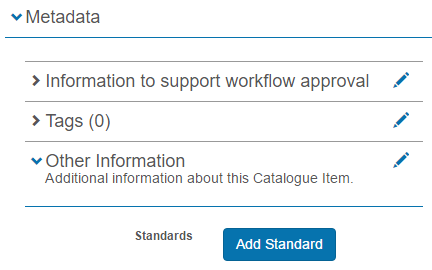 Tip A custom page can be built to fulfil many purposes and must be built before it can be used to create a custom view attribute. Generally a Janison developer will build the custom page. Please contact the Janison customer services team for more information. |
| Date | Used to add a date field to a system object. The end user selects the field and then chooses a date from a date picker.Example: 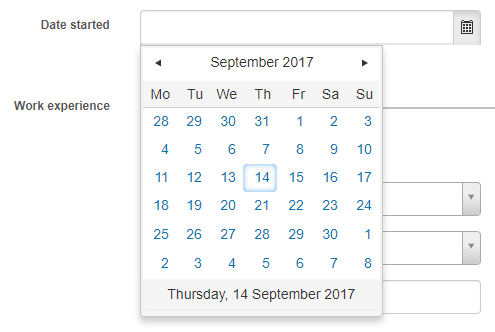 |
| Date Time | Used to add a date and time field to a system object. The end user selects the field and then chooses a date from a date picker and a time from a time picker.Example:   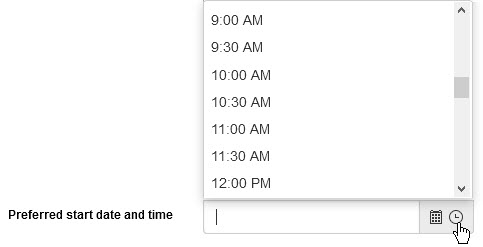 |
| Float | Used to add a text entry field that accepts whole numbers and floating-point numbers (those containing a decimal point) to a system object.
Example: Adding a float text entry field:  |
| Image | Used to add an image upload field to a system object. The following image files are supported:
End users select the Select file button and then browse their folders to choose an image to upload.  When the image is uploaded, it is displayed and the file name listed. 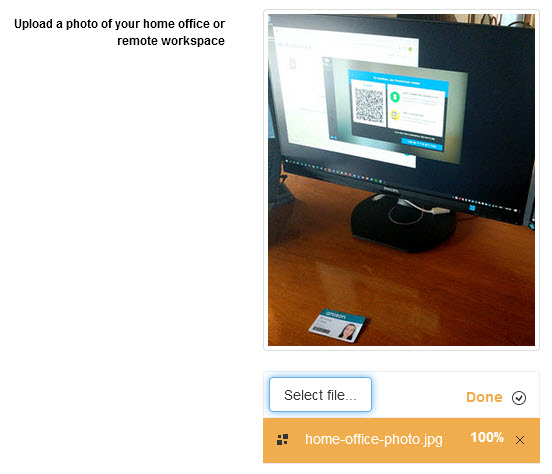 |
| Integer | Used to add a text entry field that accepts whole numbers to a system object.
Example: Adding an integer text entry field, with a lower limit of 2 and upper limit of 5:   |
| List | Used to add a drop-down list to a system object. Each list element can have a name, an identifier and a value associated with it.Example, adding a list drop-down field to the New User screen:  |
| Memo | Used to add a free text entry field to a system object. Similar to a ‘string’ custom attribute, but provides a larger text entry area. The memo can be set to:
|
| Selection | Used to add a selection drop-down list to a system object. Similar to a list custom attribute, but without the option for having an identifier or value per list element.Example: Adding a selection drop-down list to the New User screen:  |
| Selection with other | Used to add a drop-down list with an additional ‘Other’ text entry field to a system object. Essentially the same as a selection custom attribute as shown above, but allows end users to select the ‘Other’ element and enter text to create their own element.Example: Adding a selection with other drop-down list to the New User screen. If none of the elements suit, the user selects Other from the drop-down field: 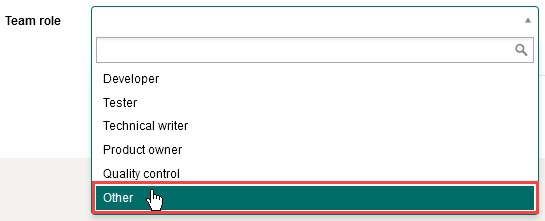 Then enters the required text in the field that displays:  |
| Selection from system entity | Used to add a drop-down containing a list of system entities to a system object. The system will create the list based on the settings selected when the custom attribute is created.Example: Adding an Organisation Unit drop-down list to the User screen:   |
| String | Used to add a free text entry field to system object. The text can be restricted by length or a regular expression as needed. This type of custom attribute is used for the majority of metadata fields.Example: Adding a free text entry field to the New User screen:  Tip A regular expression (sometimes shortened to ‘regex’ or ‘regexp’), is a sequence of characters that define a pattern. More details about regular expressions can be found on the Regular-Expressions.info website. |
Custom attributes are created by following three main steps:
Tip
Custom attributes cannot be directly linked to catalogue items, tests, test sections or questions. Instead, a custom attribute set must be created and linked to a discipline.
Custom attributes can be linked to other objects such as new user creation, schools or assessment events.
To create a custom attribute:


Next you will need to select a type for the new custom attribute.
Tip
For more information on each type of custom attribute and how they display to end users, see to the Custom attributes section.
There are further steps to complete when creating each type of custom attribute. Refer to the required custom attribute below for full details.
Custom attributes assigned to the Users system object can be set to allow batch edits. This allows the same change to be made in a custom attribute field across one or more Users at the same time.
In the following example, we show how batch edit can be used to add first aid certification to a group of users.
To assign custom attribute values via batch edit:

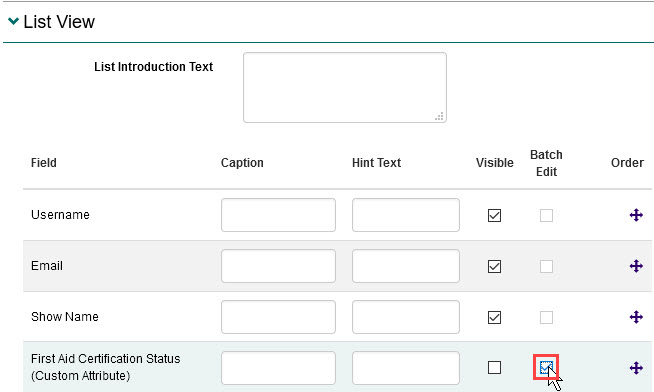
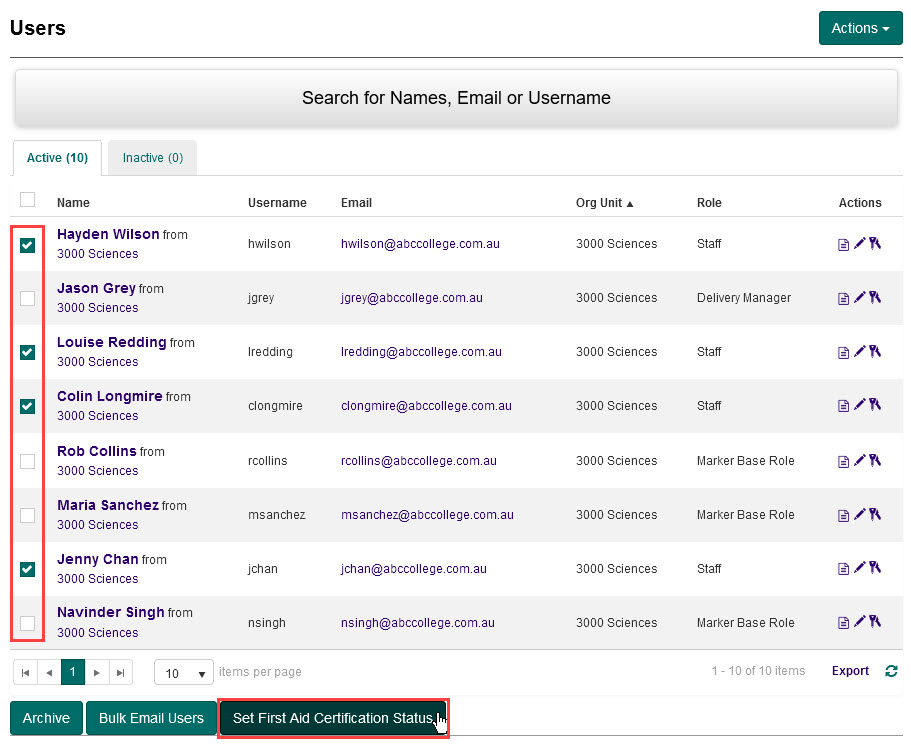
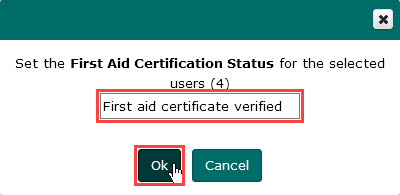
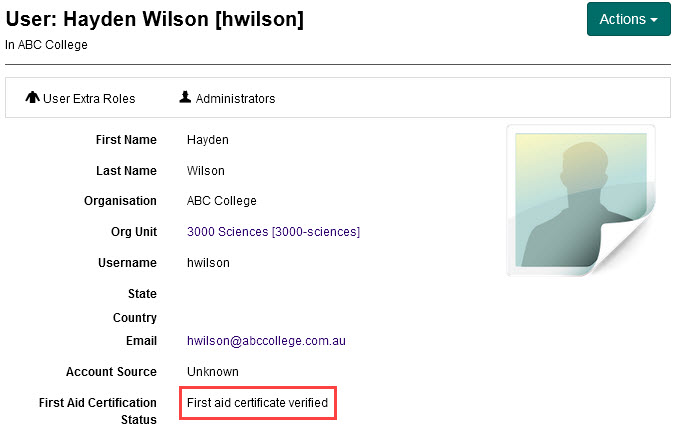
Tip
You can also set the custom attribute field to display on forms and views. For more information on changing the settings for these, see the Configuring the forms and views section.
Custom attributes can be grouped into sets, which can be linked to disciplines. Creating disciplines is currently completed by the Janison Implementation Team.
Custom attributes must be created before they can be added to a set. For information about each type of custom attribute and how to create them, refer to the Custom attributes and Add a custom attribute sections.
To create a custom attribute set:








1300 857 687 (Australia)
+61 2 6652 9850 (International)
ACN 091 302 975
ABN 35 081 897 494
© 2024 Janison
Janison acknowledges the traditional owners of the land on which we work and meet. We acknowledge the continuous care of the land, animals and waterways. We pay our respects to Elders past, present and emerging.